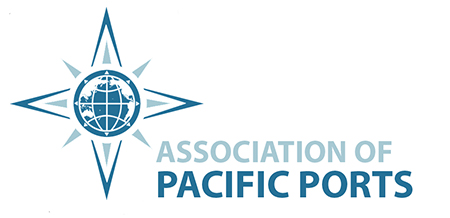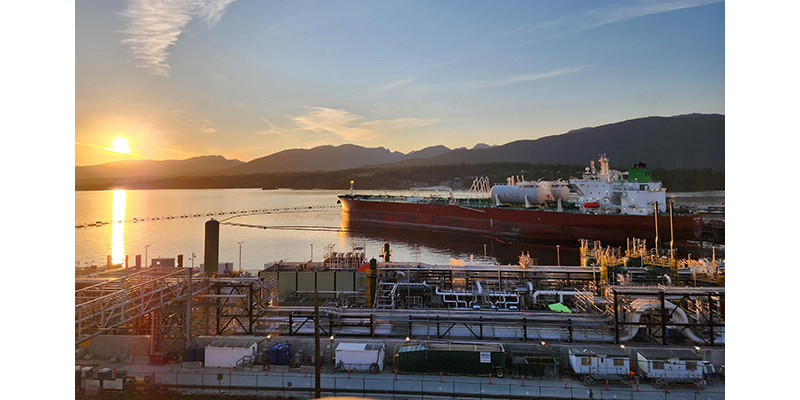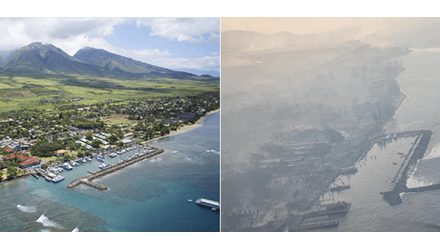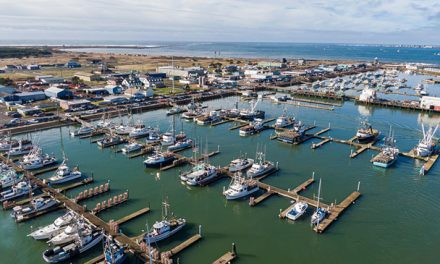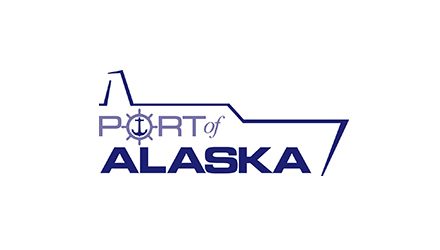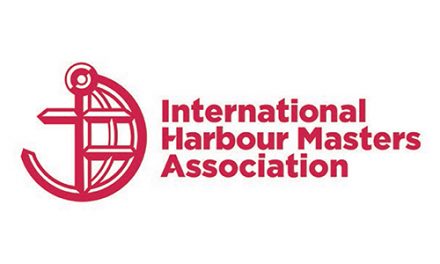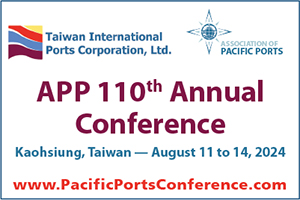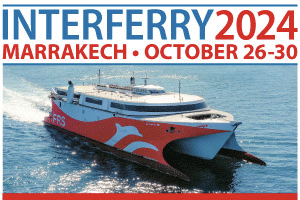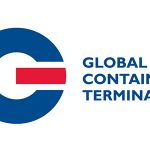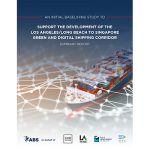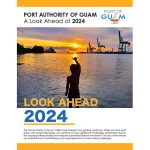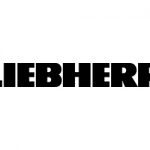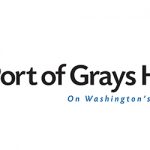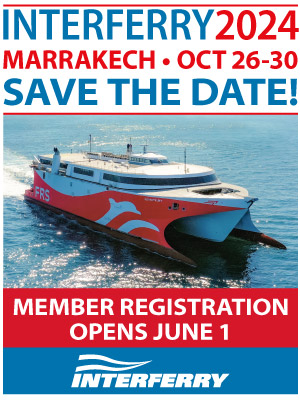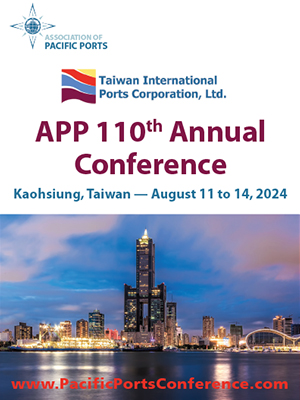From the March/2024 issue of Pacific Ports Magazine…
Looking back over the process of modernizing the now complete Westridge Marine Terminal, Michael Davies, Chief Operating Officer for Trans Mountain Corporation, said he was proud of what they have achieved. “It was important to all of us to do this properly,” he said. “I’m proud of the approach that we took as a company. We were very mindful of our commitments to the communities and environment along the pipeline route and within the marine space where Westridge resides. And I’m proud that it was done in a way that reflected what Canadians expected.” Indeed, while touring the terminal with Davies, who explained the many modern features now in place, the APP was able to see that his pride was not misplaced.
Background
Numerous articles and news stories detail the process of the application from Trans Mountain (formerly Kinder Morgan) as it sought to twin its pipeline. The Trans Mountain Expansion Project included the expansion of Westridge Marine Terminal from its existing one-berth terminal to a modern three-berth facility. While there was no change to the type of cargo or size of vessels that would visit Westridge (Aframax-size tankers), the number of visits would increase roughly from five per month to potentially 34 per month at full capacity. The Project was intended to deliver nation-building infrastructure that would provide a new opportunity for Canadian oil to reach world markets.
What was originally expected to be a two-year project development process turned into something closer to 10 years, but Davies believed the end result was worth the wait. The rigors of consultations, reviews, and multi-department governmental regulations, while arduous, served to strengthen the project. “We could talk about costs and schedules and issues like that but here at the end of the project, you can see the evidence of how the input from stakeholders — Canadians, all levels of government, First Nations, environmental interests, and the marine industry — has turned this facility into a world-class terminal and a world-class system for oil transport,” said Davies.
Landside
A tour of the new dock complex starts landside with a view of three new 30-inch delivery lines coming out of the side of Burnaby Mountain and leading toward the berths (flow from three delivery lines can be directed to any of the three berths). “We committed to the City of Burnaby to tunnel the lines through the mountain and straight out to the docks,” said Davies, noting that this not only minimized disruption during the construction process — i.e., avoiding tree removal or interference with residential areas and urban infrastructure — but also reduces risks during operations.
Also new to the terminal landscape is a state-of-the-art control building, replacing the old ones. Equipped with the newest technology, the building will feature:
- Separate HMI panel for each Berth (HMI = Human Machine Interface)
- State of the art monitoring via multiple cameras
- Fire System monitoring
- Trelleborg Dynamic Mooring System Release and line management for each berth
- Incoming vessel display board on each berth (vessel’s speed and angle of approach)
- Trelleborg weather and oceanographic data monitoring (monitors and displays wind speed/direction, visibility, ran fall, wave height and current speed and direction)
- MVCS Monitoring for each train and for new VCU
There is also a new ambient air quality monitoring station that measures not only emissions related to operations but other pollutants common to the air shed. Using self-diagnosing technology, the system sends out an alert if any component being monitored drifts outside of normal operating conditions. The monitor, its measurements and recordings are all available to the public online once the system comes into service.
Moving through the extensive on-land infrastructure that supports the delivery lines, one of the most striking visible changes is the Marine Vapour Control system (MVCS). The process of filling a marine vessel with oil leads to the generation and displacement of hydrocarbon vapours or gases from within the vessel’s cargo tanks. Previously, vapours that were expelled from tanks were captured and destroyed with one Vapour Combustion Unit. Now, two new Vapour Recovery Units collect almost all odorous compounds and volatile organic compound emissions from the vapours which are then compressed, liquefied, and cooled before being re-injected into the next vessel during the loading process. “We worked with the manufacturers to design this system specifically for the terminal,” Davies said, adding that he was unaware of any other marine terminal in the world with such advanced technology at this scale.
Waterside
With the old berth, now decommissioned but still visible, the new three-berth dock complex, including a utility dock, stands as a testament to the advances of technology over the past 70 years. “There were upgrades of course and it was rebuilt in the mid-2000s but there are few marine structures that have had that long a service life,” said Davies, noting that the old dock will be removed in time.
Along the berths, the delivery lines lead to two loading arms (each with a 16-inch diametre) and a vapour arm (described above) with a 12-inch diametre. The layout of the new docks was designed in conjunction with the Vancouver Fraser Port Authority, the Pacific Pilotage Authority, and the BC Coast Pilots. Considering factors like a high level of navigational and mooring safety as well as safe navigation for all other marine traffic in the area, Trans Mountain also prioritized minimizing the impact on the surrounding environment. For example, mitigation measures included establishing a rock reef complex in a designated area on the west side of the terminal to create refuges for smaller fish and surface area for algae to grow. The rock reef complex was constructed on the seafloor using heavy equipment to place crushed bedding rock, rock mattresses, and reef rock. The 10,400 m2 complex includes 4-5 metre gaps between the square reefs to encourage water circulation and an expanded toe berm (nursery) reef to provide stability, prevent slumping and form rocky habitats for fish and invertebrates.
As noted previously, the docks were built to allow for continued visits from Aframax-sized vessels. “Most of the time, there will only be two or less vessels being loaded at any given time,” Davies said. “The third berth is essentially for redundancy and back up or, in some cases, it can be used for catch up if needed.”
Beyond the bricks and mortar
Providing an overview of the infrastructure now in place at Westridge Marine Terminal is only part of the story. No overview would be complete without mention of the safeguards, the people and the best practices that are in place and adhered to rigorously.
An 85-person full-time team that includes supervisory staff, technicians, marine professionals, emergency response personnel and others are involved in operating the Burnaby and Westridge Terminals on a 24/7 basis. “There are two parts to the operation,” Davies explained. “There’s the Trans Mountain pipeline side and then there is the terminal operations. For the pipeline, the skills required are similar to other industrial operations — pulp mills and power plants, for example. For the terminal and loading of ships, the job calls for specialized marine training. While everyone will have some interface with the ship, we always have someone who was typically a master or an officer with tanker experience who is our person on the vessel during the loading process.”
The vessels themselves are vetted well in advance of arriving at the Westridge docks through a terminal management system which captures and makes available technical, inspection, and historical data from all global commercial vessels as well as owners and operators. Prior to the transfer of cargo at the Westridge dock, a loading master conducts a physical inspection of the vessel and ensures it, and its crew, are prepared for a safe loading. The loading master stays aboard the tanker throughout the loading process to monitor the vessel and its crew and to ensure efficient communication between the terminal and the vessel.
In addition to safeguards for vessels transiting the port area, Trans Mountain has committed tug escort outside the port limit (Buoy QA to Buoy J) in the commercial shipping lanes of the Salish Sea for outbound laden vessels. This includes two high-performance escort tugs supplied by KOTUG Canada, and the introduction of a new Offshore Supply Vessel which will all be based at the Sc’ianew First Nation Community of Beecher Bay on Vancouver Island. Trans Mountain is a shareholder of the Western Canada Marine Response Corporation (WCMRC), the spill response corporation for Western Canada. “WCMRC has been an integral part of our expansion project,” Davies said. “To support this project, they went from an operation of about 60 people to now close to 200 and expanded their equipment caches and bases along the entire B.C. coast not to mention the increased capabilities of its response vessels. Truly, they built a world-class response regime to compliment the increased operations for Westridge and as a result, have greatly increased the public’s confidence about our project overall.”
Throughout Trans Mountain’s Expansion Project, there was one key piece that, in Davies’ view, was critical to their overall success. “We were committed to listening to the communities, including Indigenous communities, and we acted on what we heard.” Whether it was consultation about the environment, resulting, for example, in the rock reef complex noted earlier; or about culturally sensitive Indigenous areas, resulting, for example, in one of the largest archaeological projects in Canada that identified 80,000 artifacts relevant to First Nations’ history, the Trans Mountain team did not just pay lip service to the notion of consultation. Davies also paid heed to their involvement in Canada’s reconciliation efforts. “Indigenous economic participation was a key part of our efforts,” he said noting that there are now five preferred indigenous contractors that are a part of the long-term maintenance program.”
Conclusion
There’s so much more to the Westridge story than can be captured in a few short pages within Pacific Ports. From identifying the need for expansion and developing the concept, to moving through the approval process, extensive community engagement, collaboration with marine industry agencies and careful attention to environmental, social, and economic factors, the Trans Mountain and Westridge Marine Terminal team have persevered. The Trans Mountain Expansion Project has resulted in not only a world-class petroleum loading facility, but a world-class marine regime for the entire B.C. coast with increased capabilities in emergency response and tug assets as well as safe navigation practices for all vessels.
As Davies so aptly put it: “We lived and breathed this project every day for so many years and it was important to us that it was done right with no aspects of safety or quality compromised. I’m very proud of what we’ve accomplished.”
